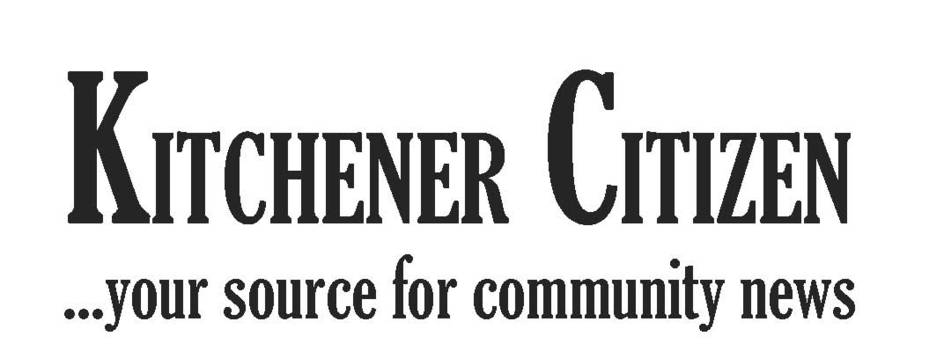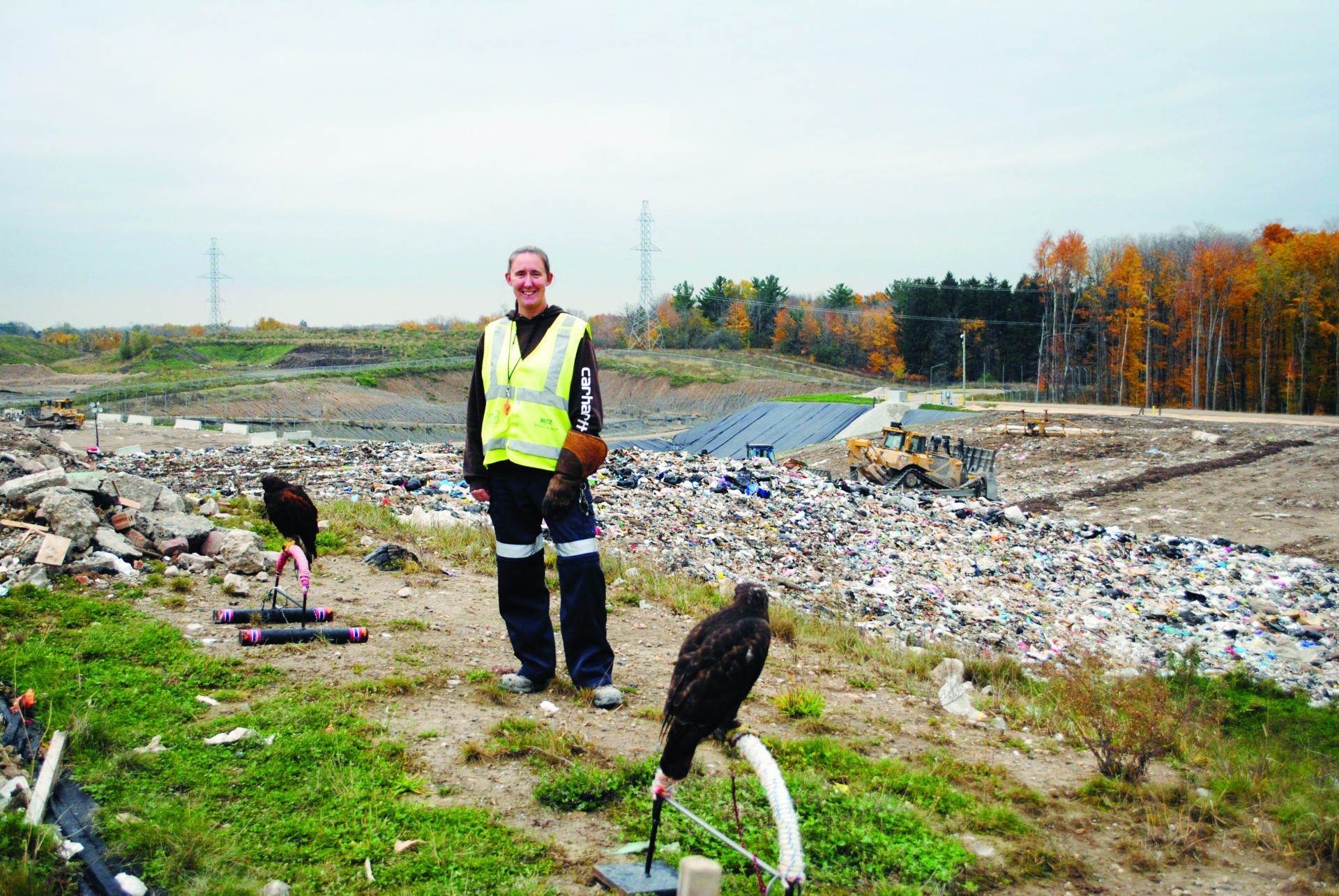

USING NATURE TO CONTROL NATURE
Hawks keep watch over Region of Waterloo landfill site
Hawks keep watch over Region of Waterloo landfill site
Falconer Julia Staines and two of her trained hawks, Alaska in the foreground and Honey in the back, keep the gulls away from the Region of Waterloo’s landfill site on Erb Street West in Waterloo, making it easier for the bulldozer drivers to work.
Photo by Helen Hall
Photo by Helen Hall
For News Tips & Advertising call...
Kitchener East - 519-578-8228
Kitchener West - 519-394-0335
 by Helen Hall
by Helen HallKitchener Citizen
December 1, 2016
Some of falconer Julia Staines’ jobs are more thrilling than others.
At the end of October, one of her hawks dropped wedding rings from above into the waiting hands of a priest during a wedding ceremony.
“Everyone cheered,” she says with a laugh.
Staines does educational programs at schools and summer camps. She even met the Toronto rapper Drake when she took an owl to be used at one of his photo shoots.
But most days, you’ll find Staines and a couple of her hawks patrolling the Region of Waterloo’s landfill on Erb Street West in Waterloo.
And that is just fine with her.
Staines’ company is called Free Bird Falconry, and her trained hawks are hired by the Region of Waterloo for pest control.
Over 10 years ago, the number of gulls that flocked to the landfill became so great that the region began using hawks to scare them away.
The clouds of gulls blocked the vision of the bulldozer drivers, and covered their windshields with poop so quickly they were unable to keep them clean.
Scaring away the gulls also protects the surrounding neighbourhood, as the birds regularly pick up garbage from the landfill and then drop it beyond the site.
Staines arrives three days a week with caged hawks Honey and Alaska in her pickup truck. She recently got a third hawk called Carmen.
Staines said some of the gulls at the landfill leave before she even gets the hawks out.
“They recognize my truck now,” she said.
Once she’s parked, she lets one of the hawks fly to frighten away any scavenging gulls and crows.
“She does catch them sometimes,” Staines said of Honey, a six year old Harris Hawk.
“It’s effective because it is their natural predator. I call it using nature to control nature.”
But most of the time, it’s just the hawks’ presence that keeps the gulls away.
After a flight, the hawks sit perched in a location where they are easy to see. If the gulls start to reappear, a hawk takes to the sky again.
The hawks respond to a whistle and starter pistol that Staines carries with her.
But things don’t always go as planned.
On a couple of occasions, Honey has travelled too far away. Once, she was chased by a wild hawk at the landfill. Another time, her happy soaring took her higher and higher into the sky.
“I was panicking,” Staines said. She swung a lure made of meat on a string to bring Honey back down.
“She dropped like a bullet out of the sky,” Staines said. “I was worried, but she obviously knew where I was.”
Staines said that although the birds are work animals, she has the same love for them that people have for their pets.
Staines became interested in being a falconer when she worked at the KW Humane Society. She worked there for eight years and helped with animal care and adoptions.
A number of injured hawks were brought in to the humane society, and they went for rehabilitation with a falconry company.
She apprenticed with that falconry company for two years to become a falconer herself.
“I love this job,” Staines says of working at the landfill with her hawks.
"It’s cool that you get to work with birds all day and learn their personalities.”